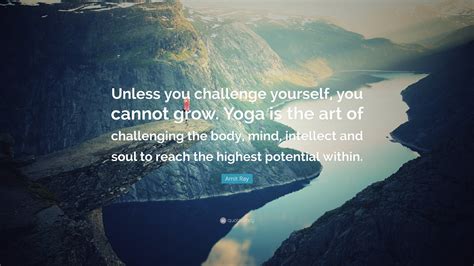How to Tell If You’re Challenging Yourself Enough in Yoga: Finding the Perfect Balance
Yoga is about balance—not just in your physical practice but also in the way you challenge yourself mentally, emotionally, and spiritually. Whether you’re a beginner or a seasoned yogi, one of the most common questions is: “Am I pushing myself enough?” Striking the balance between effort and ease is crucial for continuous growth. This article dives deep into how you can evaluate whether you’re challenging yourself enough in your yoga practice, what signs to look for, and what to adjust for optimal development.
Introduction
Yoga is more than just a physical activity—it’s a journey toward self-improvement and self-awareness. Whether you’re aiming to enhance flexibility, strength, mindfulness, or all three, you may question whether your current practice is pushing you hard enough. On one end of the spectrum, not challenging yourself can lead to stagnation. On the other end, overexertion can cause burnout or even injury. So, how do you find the sweet spot where growth occurs? In this article, we’ll examine how to evaluate your current yoga routine, identify areas of improvement, and push your boundaries safely.
Key Concepts
Understanding some key concepts can help you identify if you’re striking the right balance in your yoga practice:
- Edge: This refers to the point where you’re working hard but not pushing yourself into pain or injury.
- Discomfort vs. Pain: It’s important to distinguish between discomfort (which is okay) and pain (which is a sign you’re overdoing it).
- Ahimsa (Non-Harm): One of yoga’s core principles. It means pushing yourself without causing harm to yourself or others, either physically or emotionally.
- Sthira and Sukha: This balance of steadiness and ease is key to knowing whether you are challenging yourself enough.
Historical Context
Yoga has evolved significantly from its roots in ancient India to the global practice it is today. Historically, it was less about the physical postures (asanas) and more about mental discipline and spiritual growth. Physical challenges weren’t the primary focus; instead, it was about cultivating a balanced mind. However, as yoga was adapted by the West, the physical component became more emphasized, especially in fitness-based forms like Vinyasa or Power Yoga. This shift means that modern practitioners might associate challenge more with physical exertion, which can sometimes detract from the broader holistic practice. Finding balance in challenge means recognizing that growth isn’t just physical but mental and spiritual as well.
Current State Analysis
With the rise of competitive attitudes toward yoga, especially on social media, many practitioners struggle with balancing effort and ease. The desire to perform more advanced poses can overshadow the internal focus that yoga encourages. However, yoga studios and online platforms are also beginning to shift back toward a more holistic approach, focusing on mindfulness, body awareness, and breath alongside physical challenges. Modern yoga practitioners must navigate this duality: the need for physical challenge while maintaining mindfulness.
Signs You’re Not Challenging Yourself Enough
- You rarely break a sweat or feel your heart rate increase during your practice.
- Your postures feel too easy, and you don’t feel any muscular engagement.
- You’ve plateaued in your flexibility or strength.
- You’re no longer mentally present during your practice, feeling bored or distracted.
Signs You’re Over-Challenging Yourself
- You’re frequently sore or injured.
- Practices leave you exhausted rather than rejuvenated.
- Your breathing is irregular, and you often hold your breath in poses.
- You’re constantly comparing yourself to others or pushing through pain to achieve a pose.
Practical Applications
Here are actionable ways to ensure you’re challenging yourself appropriately in yoga:
- Set Intentions: Begin each practice by setting an intention, whether it’s physical (e.g., building strength), mental (e.g., increasing focus), or emotional (e.g., letting go of stress).
- Try New Styles: Explore different types of yoga such as Ashtanga, Yin, or Restorative Yoga to challenge different aspects of your practice.
- Use Props: Props such as blocks and straps can either assist or deepen your postures, depending on your level of ability.
- Mix Active and Passive Poses: Balance challenging poses like arm balances or inversions with more restorative ones like child’s pose to ensure well-rounded progress.
Case Studies
| Case | Challenges | Solutions |
|---|---|---|
| Case 1: The Stuck Beginner | This yogi has been practicing for six months but feels no significant progress in flexibility or strength. | Incorporate dynamic movements, try a different class level, or focus on deeper breathing techniques during poses to increase engagement. |
| Case 2: The Over-Achiever | Constantly striving for advanced poses and frequently feeling sore or injured. | Adopt a gentler practice, incorporating more restorative sessions to allow the body to recover. |
Stakeholder Analysis
Different stakeholders in the yoga community may have varying perspectives on the issue of challenge in yoga:
- Instructors: Aim to guide students toward personal growth while maintaining safety.
- Students: Some seek physical challenge, while others prioritize relaxation and mindfulness.
- Studios: Balancing the need for challenging classes with offering beginner-friendly options is essential for growth.
Implementation Guidelines
If you’re unsure how to increase or decrease the challenge in your yoga practice, consider the following guidelines:
- Track Progress: Keep a journal of your experiences to identify whether you are being challenged in a balanced way.
- Consult Your Teacher: Ask your yoga teacher for advice on how to safely deepen or adjust your practice.
- Listen to Your Body: Tuning in to how your body feels during and after practice is key to finding the right level of challenge.
- Balance Intensity with Rest: Plan your week to include a mix of challenging and restorative practices to allow for recovery.
Ethical Considerations
It’s crucial to acknowledge that pushing oneself too far in yoga can not only lead to physical harm but also mental and emotional strain. Yoga’s ethical principles, particularly Ahimsa (non-harming), should guide practitioners in finding the balance between effort and ease. Instructors should also be mindful of not pushing students beyond their comfort zones without their consent.
Limitations and Future Research
Although much has been said about the balance of challenge in yoga, more research is needed to understand the long-term impacts of pushing physical limits in yoga on both the body and mind. Additionally, there is a lack of studies that specifically address the role of mental and emotional challenges in yoga practice. Future research could explore how psychological growth occurs alongside physical challenge and how best to guide practitioners in balancing these two aspects.
Expert Commentary
Experts in the yoga field emphasize that the key to growth in yoga is learning to challenge oneself appropriately. By focusing on mindfulness, breath, and body awareness, practitioners can safely push their boundaries while staying grounded in the practice’s deeper teachings. As one instructor puts it: “Yoga is about finding the edge where growth happens, but also knowing when to pull back to allow the body and mind to integrate that growth.”








